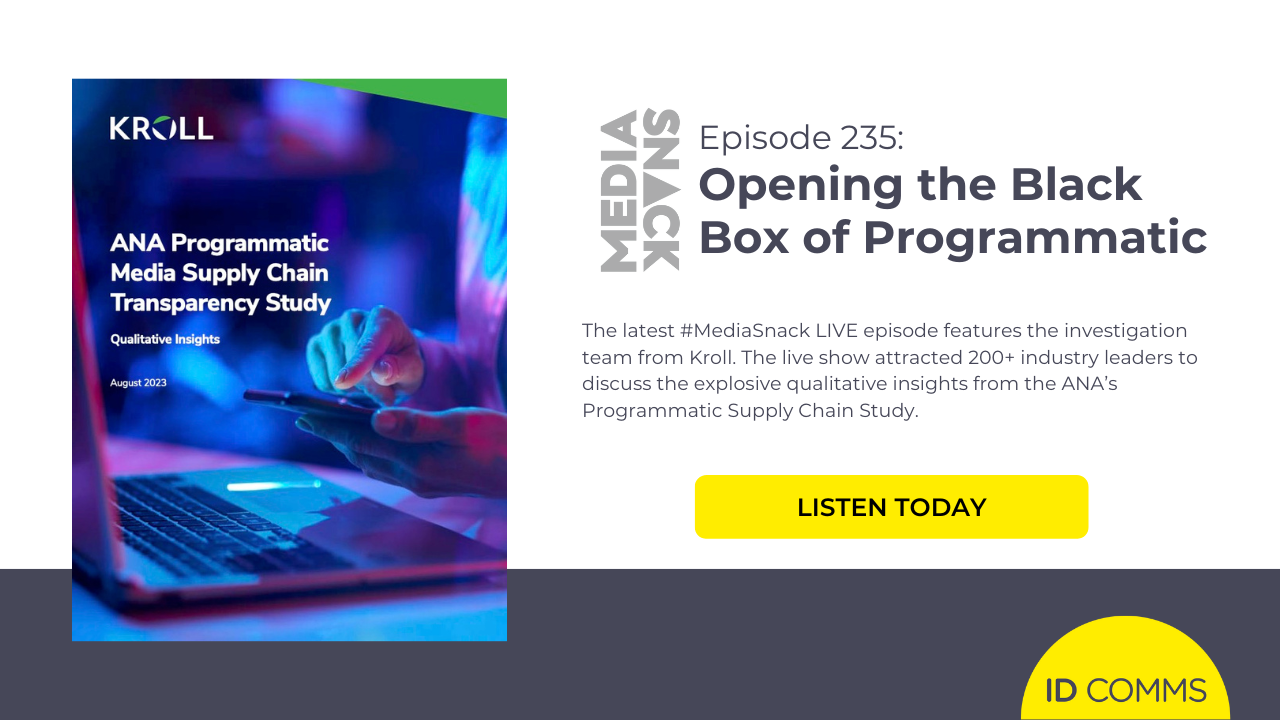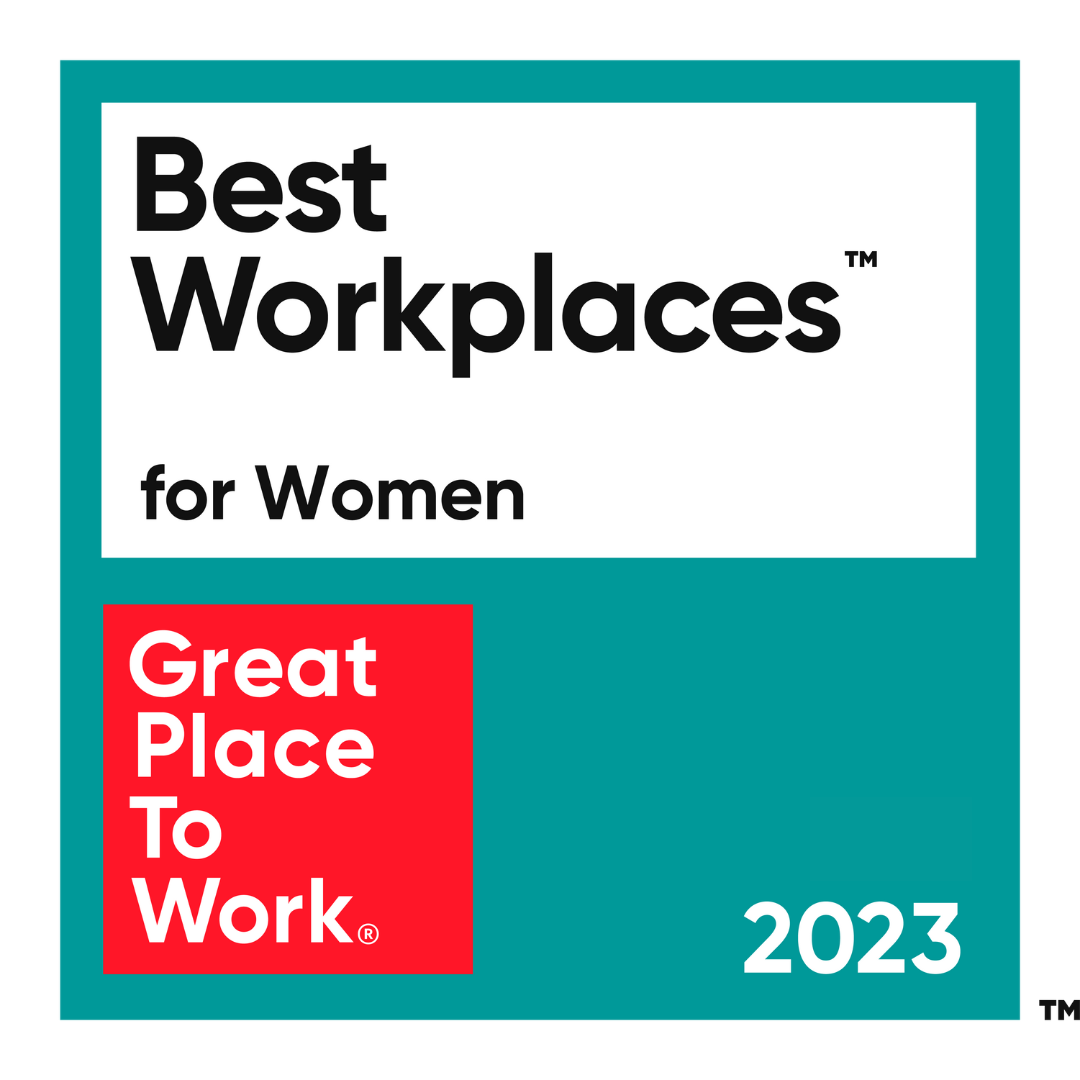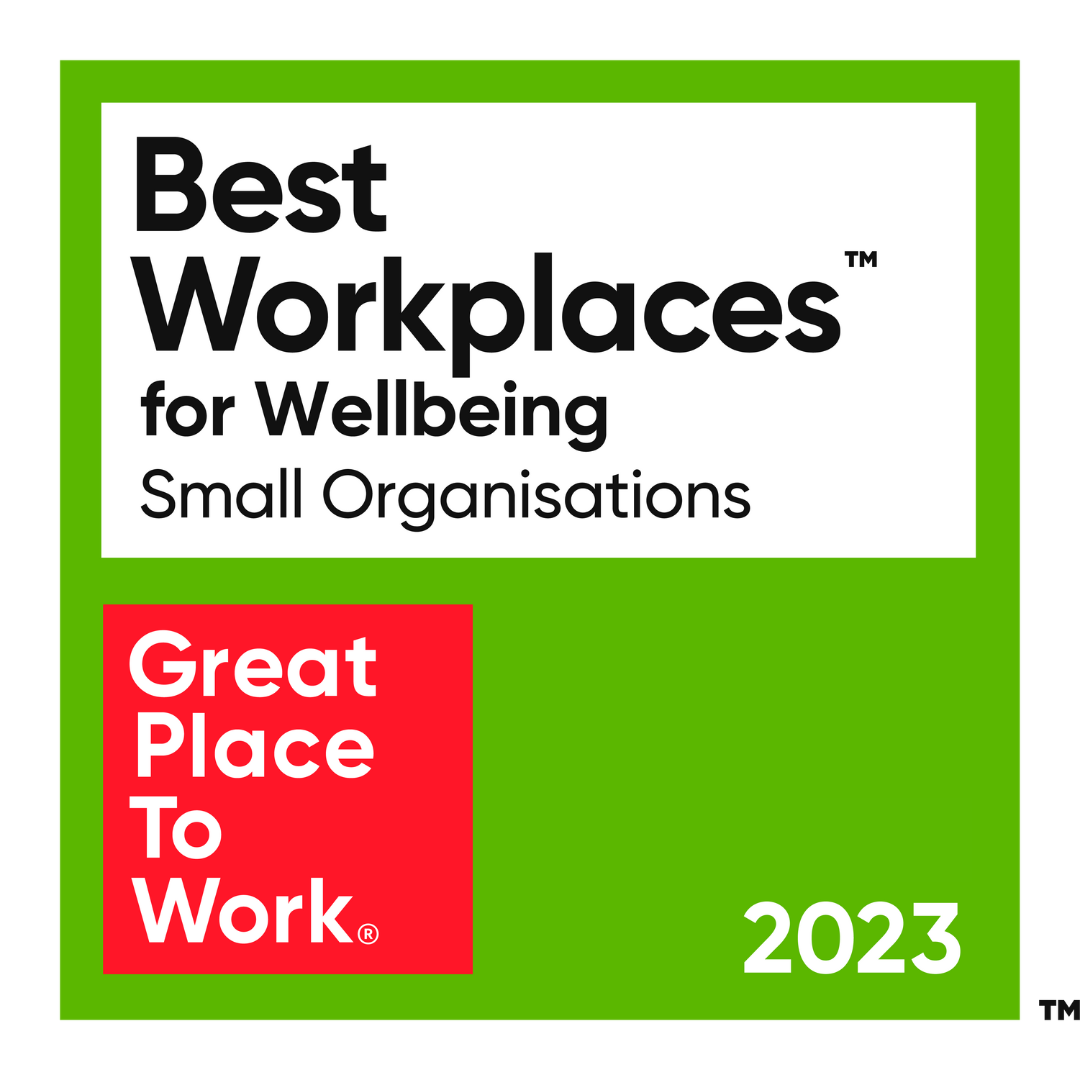Brands Deserve Better Media
A weekly column from @tomjdenford
There are people, companies, behaviors and practices behind the mess of programmatic that we have yet to fully understand. Until now…
The latest installment of the ANA’s Study into Programmatic Supply Chain Transparency is a real eye-opener. It is published by the renowned investigations firm Kroll and you can access it free from the ANA website here.
Getting the ‘insiders’ view
This report is particularly exciting because it offers a rare treat. Unlike most of the advertising industry’s quant-heavy reporting, this report from Kroll gives us a unique qualitative view based on their interviews with insiders. These are the people and organizations typically sitting behind the curtain of programmatic, those with knowledge of how it really works and who it benefits.
I don't need to explain how helpful this is to the advertiser. For too long, the marketer has suffered from a lack of transparency and understanding when it comes to the forensic and murky complexities in the programmatic supply chain. This 'information asymmetry' has left them frustrated and unable to get a straight answer from anyone involved.
Let's open up that black box!
In case you missed it, earlier this year The Association of National Advertisers (ANA) published the 'first look' of their study into the programmatic media supply chain. This was featured in a previous #MediaSnack LIVE show podcast.
As part of the ANA's study Kroll was tasked with “illuminating, clarifying, and demystifying the U.S-based programmatic media supply chain.” In other words, helping us understand the dominant behaviors and practices that exist behind programmatic today.
In particular, Kroll sought to gain insights into the following key areas:
-
The flow of dollars from advertiser to publisher
-
The value exchanged for those dollars at each link in the chain
-
Any non-transparent practices or behaviors that have the potential to create unnecessary cost or waste for advertisers
What to do?
As with all good ANA reporting, this one too comes laden with good advice, guidance and recommendations. Here are three areas of focus that I think are most notable and actionable:
-
Education: to address information asymmetry
Advertisers should invest in education. “The more knowledge you have, the more likely the ecosystem takes you seriously because you’re asking the right questions” is very good advice. As one marketer once said to me, “Those who know the least pay the most.”
The best first thing any brand can do is to raise their base knowledge of programmatic. This doesn't have to be an onerous task. Simply aligning your team with the basic principles, language and companies in programmatic will go a long way to help any future decision-making.
At ID Comms we often recommend advertiser teams take a short ‘intro to programmatic’ class with us first, so that all stakeholders and decision-makers are aligned on the basics. These forums also allow us to flush out any ‘dumb questions’ (there aren't any btw) so everyone feels they have the same information and can proceed with confidence.
- Calibration: a solution that is relevant to an advertiser’s needs
One of my biggest bug-bears of much industry reporting (especially in programmatic) is that it treats all advertisers as the same. They are not and the symptoms of poor programmatic performance will be different for advertisers in different categories, budget thresholds, agency models and so on. One size does not fit all, an approach that is right and proper for one brand may not be right and proper for another.
Sadly, there is no single best practice template to follow because first the advertiser must understand fully their own situation. The only 100% commonality for all advertisers is the need to (please) decide to take some action to address programmatic and decide to do it better.
Diagnosing and addressing challenges in programmatic requires an especially well-calibrated approach, as the remedial actions to improve transparency and performance will vary depending on the advertisers’ current set up and their future ambitions. Sometimes we start with the technology, sometimes we start by simplifying the process and workflow, sometimes it's a capability gap that needs priority attention.
- Analysis: learning from doing and getting better
Programmatic advertising is not inherently evil. It is simply a technique; sometimes done well, often done badly. Reset in your mind that programmatic can be good, you just need to decide to do it well. If brands want to commit to being better then the first thing to do is start counting, do some basic analysis of what’s happening, what’s being bought and what is being paid for it.
At ID Comms we advise advertisers to conduct quarterly deep-dives on their programmatic buys and share information internally that is easy to understand and interesting for all marketing stakeholders. You shouldn’t need to have a PhD in computer science to understand a programmatic performance report. If it's not interesting for the CMO to review it then it's not interesting enough.
Hear more from Kroll LIVE!
Sign up for a special episode of #MediaSnack LIVE on September 8. I’ll be interviewing the expert team from Kroll, the investigative firm that conducted the qualitative parts of the ANA’s study. Their goal was to illuminate, clarify, and demystify the US-based programmatic media supply chain, including the flow of dollars from advertiser to publisher, the value exchanged for those dollars and what non transparent practices and behaviors they found.
The show broadcasts live on LinkedIn Audio - which means you can raise your hand and ask questions of the Kroll team. We start at 11am ET / 4pm UK.
Join 160+ of your peers on the LIVE show - September 8, 11am ET / 4pm UK
If you care about understanding programmatic and maybe making it better, you will NOT want to miss this show. Joining me as special guests on this extended edition of #MediaSnack LIVE will be:
Richard Plansky - Regional Managing Director, North America, Forensic Investigations and Intelligence, Kroll
Sherine Ebadi - Managing Director, Forensic Investigations & Intelligence, Kroll
Kelley Elizabeth Train - Programmatic Consultant and Advisor
Brands deserve better from programmatic. When brands get the media they deserve they flourish.
When brands grow, we all win!
Tom
This post was featured in ID Comms’ weekly column, Brands Deserve Better Media. Each week, CEO Tom Denford shares insights on media and advertising and inspires us to work together to build a better future for the industry.
Sign up here to receive the weekly column and to stay in the loop with other industry and ID Comms happenings.

.png?width=300&name=169%20ratio%20(7).png)




COMMENTS